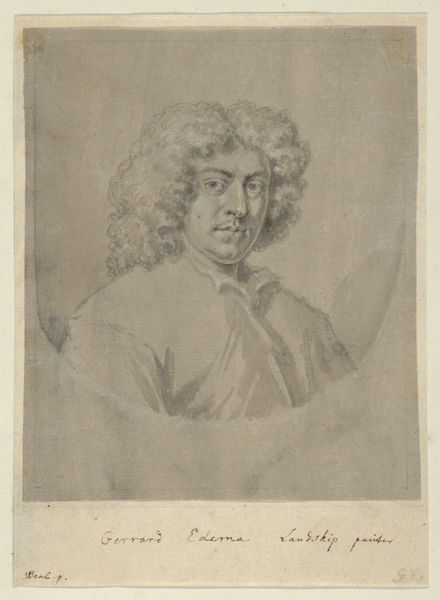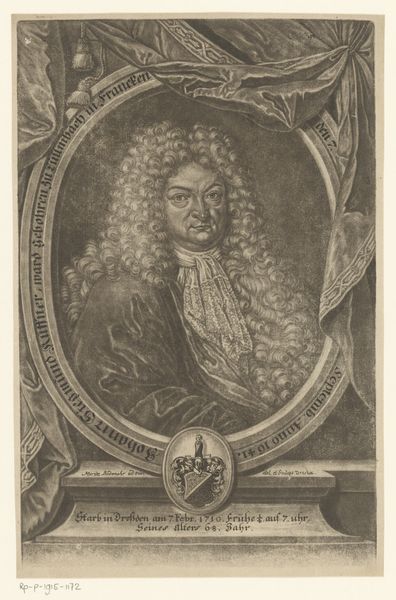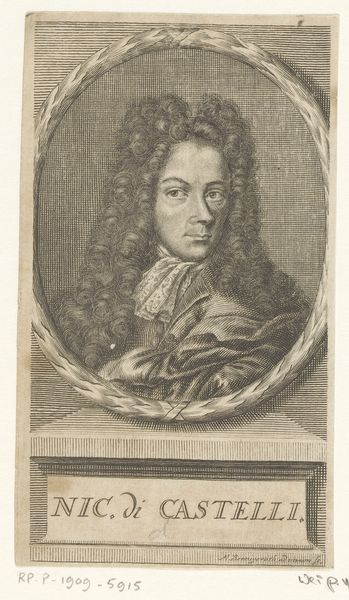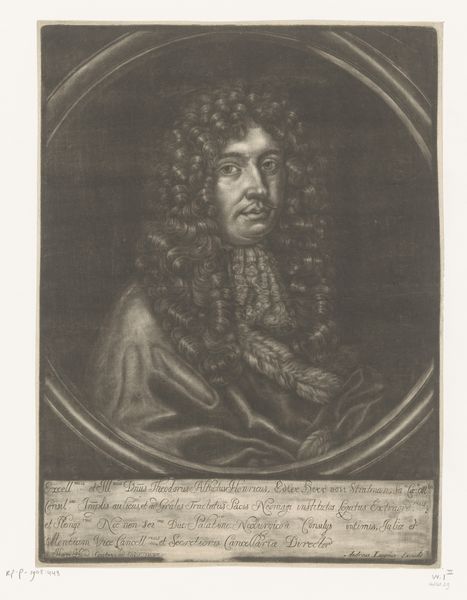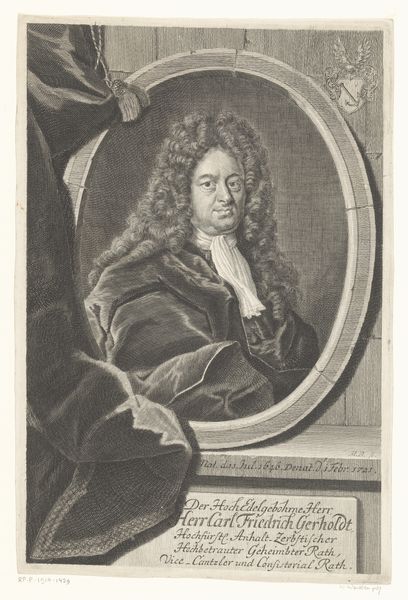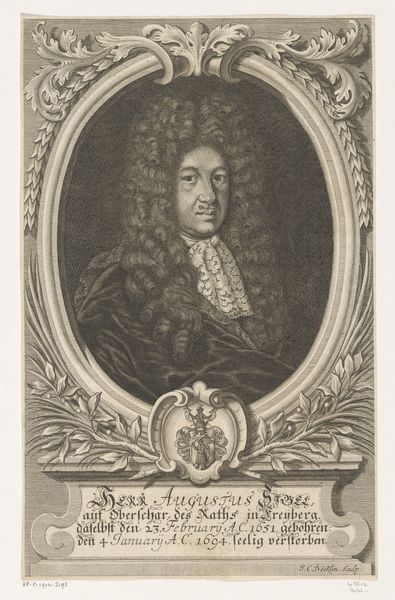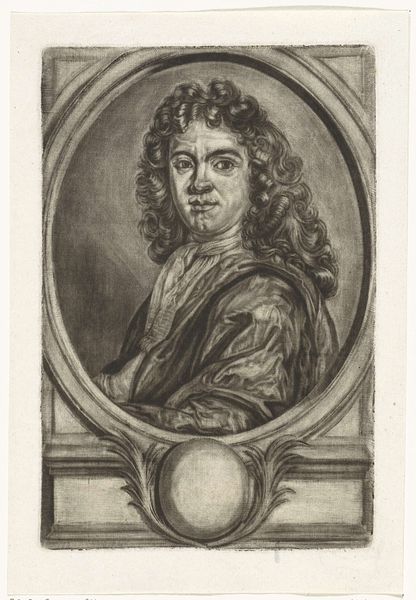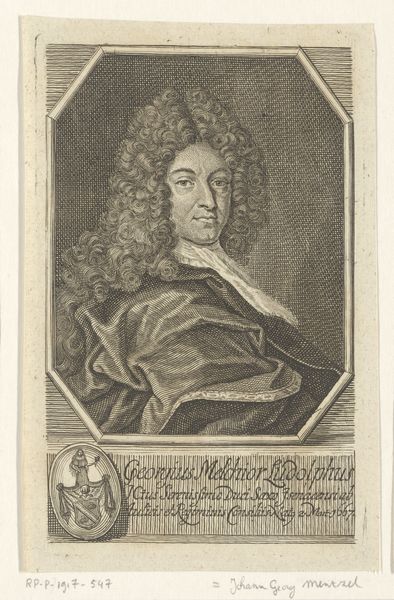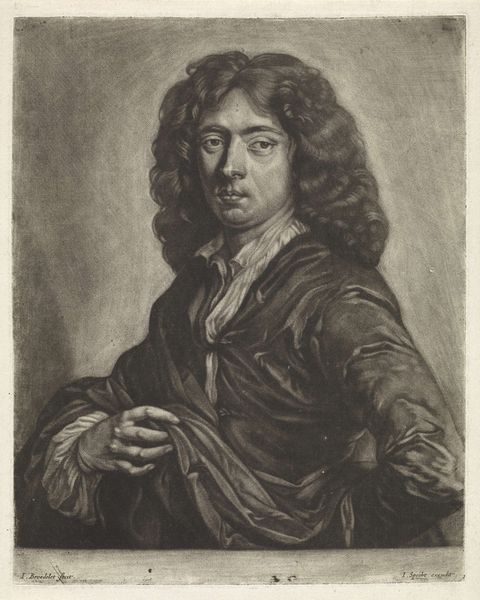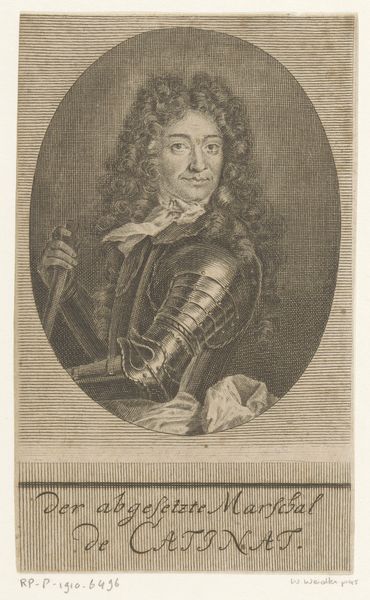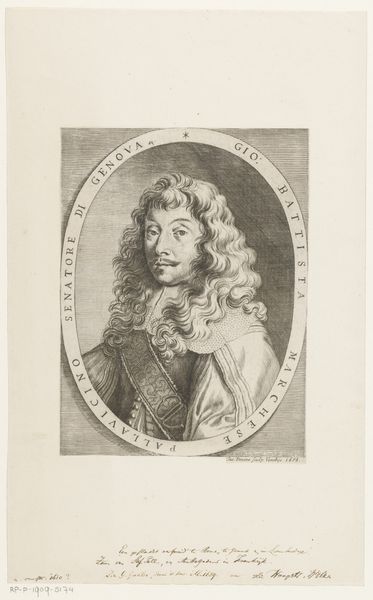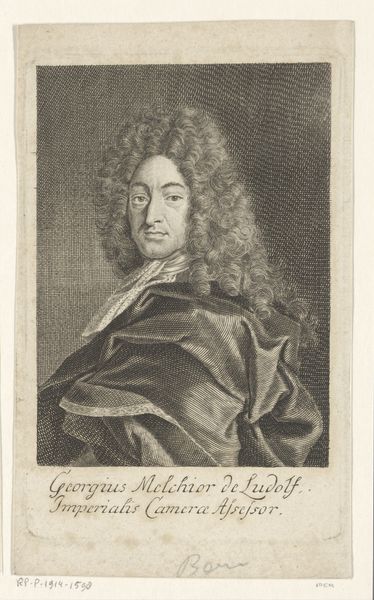
Dimensions: height 131 mm, width 83 mm
Copyright: Rijks Museum: Open Domain
Editor: This is "Portret van Christiaan Huygens," an engraving from the 1760s by Jean-Charles François. It’s fascinating how much detail the artist managed to capture using just lines. What do you see in this piece, especially considering its historical context? Curator: This portrait is more than just an image; it's a representation of power and intellectual authority within a very specific societal framework. Huygens, a prominent scientist, is portrayed in a style that speaks volumes about the social hierarchies of the 18th century. The Baroque aesthetic, with its emphasis on grandeur and detail, was often used to legitimize the elite. Editor: So, the choice of Baroque style wasn't just about aesthetics, but also about reinforcing social status? Curator: Exactly. Think about how portraits like these were used. They were tools for constructing and maintaining a particular image of authority. They also speak to the power dynamics of patronage during that era. Who commissioned the work? For what purpose? Whose stories are being told and whose are being deliberately erased? Editor: That's interesting. I hadn’t considered the social implications of the artistic style. It makes me wonder how Huygens himself would have felt about being represented in this way, given his scientific leanings. Curator: That's a crucial question to ponder. Considering the ongoing debate about representation, how do we grapple with portraits of historical figures whose legacies are intertwined with complex social structures? Editor: This makes me rethink how portraits can be read, not just as representations of individuals, but as reflections of broader power dynamics. Curator: Precisely! Art allows us a visual language to uncover the nuances of social structures and power.
Comments
No comments
Be the first to comment and join the conversation on the ultimate creative platform.
